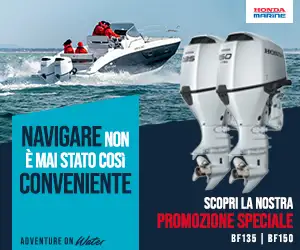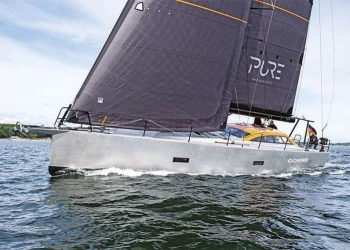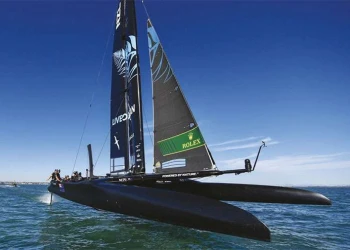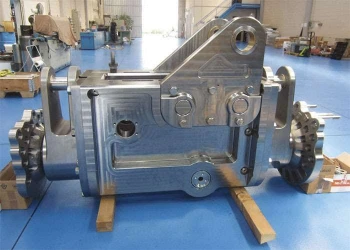
To replace the existing primary winches on a fleet of onedesign grand prix racing keelboats like the RC44 is a complex procedure.
Harken AirWinch 180: Born from a love affair with the RC44 class
The RC44 class has always had a particularly strong collaboration with Harken. ‘Back when the boat was launched, the RC44 came with the best winch gear that was on the market at the time’, says Mark Wiss, director of global grand-prix and custom yacht sales at Harken. The RC44 class has been up and running since 2007 – it might be surprising to many, but that’s more than 15 years already!
Back then, the one design class was conceived by Russell Coutts as a high-performance owner-driver keelboat with a professional crew and an international circuit. Today, the 2023 edition shows that the 44Cup is very much alive, with 11 active boats and on top of that, two new boats just being built.
Several factors have made this possible. The intense, short course racing takes place in beautiful sailing locations – this year in Oman on the Arabian peninsula, Sweden’s Marstrand, Cowes in England, Alcaidesa in the south of Spain and finally Calero in Lanzarote. The boats are professionally maintained between races and efficient logistics is a key part of the design concept: the boat is built to fit into a standard flat rack 40-foot shipping container, something that is obtained – among other things – by a removable transom and a two-part mast.
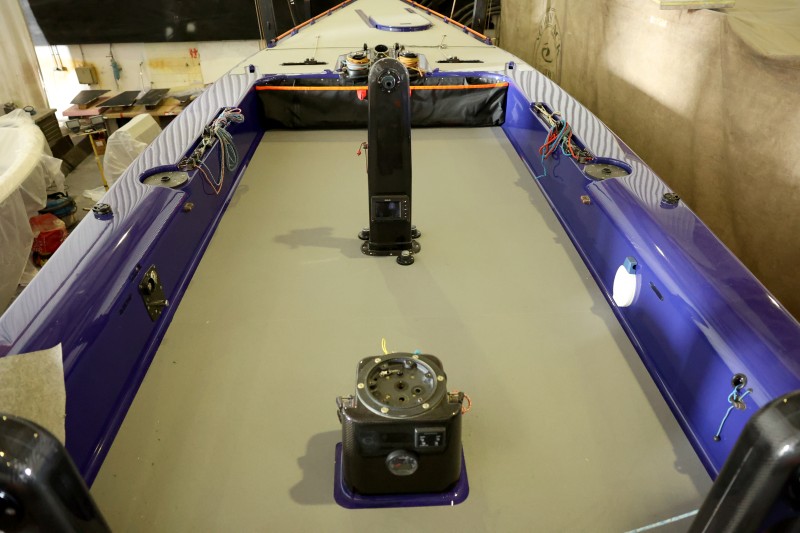
In 2007, Harken installed two B530 TCR UD pedestal-driven primary winches and a single B55.3STR pedestal-driven mainsheet winch,’ says Wiss. ‘This system has done a tremendous job over 15 seasons. But the guys are sailing the boat harder and harder every year and it’s starting to get worn. In addition, the system in itself is 15 years old and the fact is we make better winches now. So last year Bertrand Favre (class president) talked to everyone involved and the decision was made to replace the entire winch system on all the boats. Which is not a small thing on a racing machine like that. This involves the structure of the boat, sheeting systems, pedestals, gear transmissions – a lot of things have to be considered. In the new setup all three AirWinch 180s continue to be driven by the existing Harken pedestals but the interior mechanicals are upgraded from the original belt driven system to Harken’s much newer MX chaindriven system.’
The class has always attracted a bunch of good pro sailors and enthusiastic owners have found that there is no other class where you can get more bang for the buck. ‘But it’s crucial to keep the boats up to date’, explains Favre. ‘Over the years we have been through several rounds of upgrades. Since this a one design class, we have to do all the boats in one go to make sure they stay completely equal at all times.’
An open slot in the AirWinch 180 programme
‘At Harken we had already been contemplating a smaller model in our AirWinch programme for some time’, says Wiss. ‘So now with 13 raceboats needing a complete new winch setup, we realised that this was the perfect opportunity to develop what essentially became the AirWinch 180.’
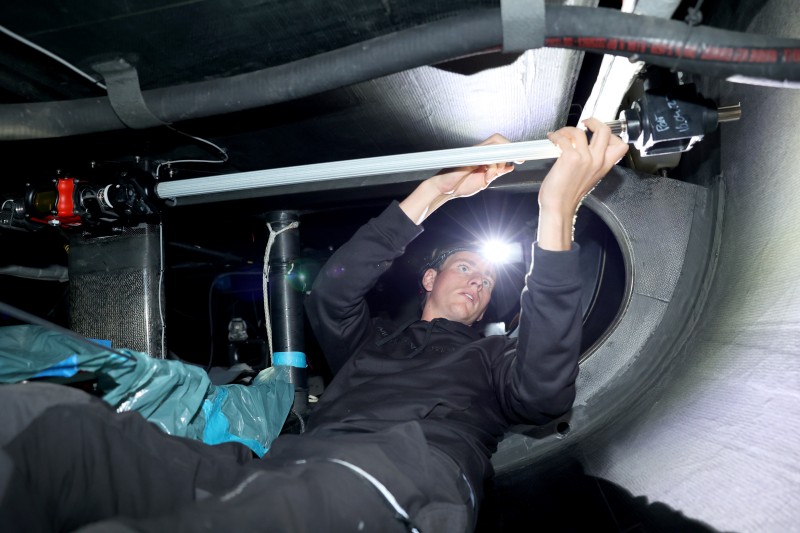
The Harken AirWinch is already firmly established as the favourite grand prix racing winch for bigger boats. They are used in all the high-end racing classes: Ultim, AC75, Imoca and TP52. The term “Air” points to the centre of the winch where you find exactly that: nothing. This “donut design”, also known from Harken Air Blocks, not only looks cool. It means a massive weight reduction. For the winches it’s well above 40 per cent, the exact figure depending on the model and version.
From a pro sailor’s perspective, however, the biggest feature is simply the speed and power of the new winch. ‘Actually, it opens up new ways of sailing the boat’, says Chris Hosking, one of the veteran pro sailors in the class, with several victories under his belt. ‘We sailed with the new winches in Marstrand this summer and discovered that we could push significantly harder coming into the mark roundings, knowing that the kite would come up or down much faster than before. Also, in the pre-start where quick and precise trimming is crucial to maintain marginal positions, the new winches enabled us to push things a bit further, actually to sail the boat somewhat more radically. The tactician had to realise that other things were possible now, so the calls would have to be a bit different than before. It was a learning process for all of us and something that really makes the boat better. And ready for a new generation’.
Even though the AirWinch was developed in cooperation with the 44Cup fleet, the 180 model is suitable for any high-end racing boat in the plus/minus 40-foot range. ‘I can see it being used even in boats as small as the Cape 31’, says Hosking, ‘and in boats around 50 feet, the 180 could easily be used for some applications there as well. So it’s a pretty versatile product. But of course it’s a grand prix racing winch and wouldn’t make much sense on a cruising boat.’
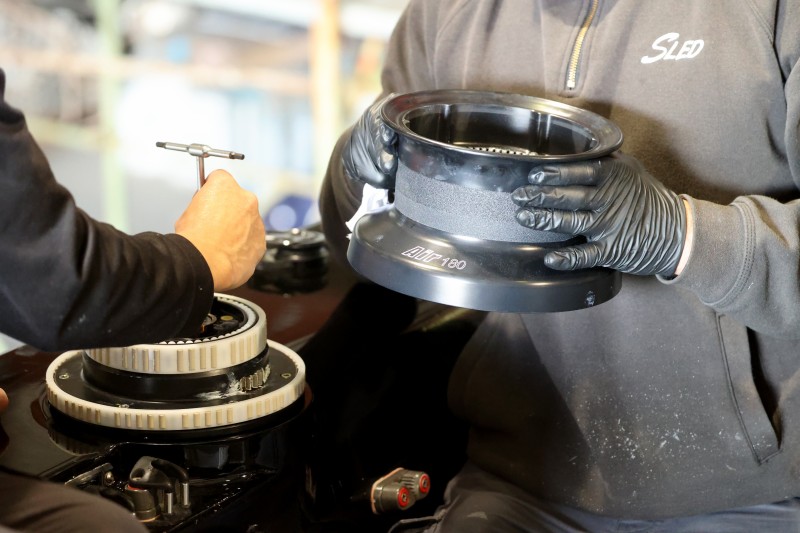
Interchangeable internal gears
Just like its bigger sisters in the AirWinch series, one of the main features of the AirWinch 180 is the interchangeable internal gears. It’s very easy to open the winch and change the gearing so that every winch can be set up for the job at hand. For example runners will need a different gearing than jib sheets or halyards. Trimmers have different physics and preferences. The winches could even be set up for the current weather conditions on the actual race day.
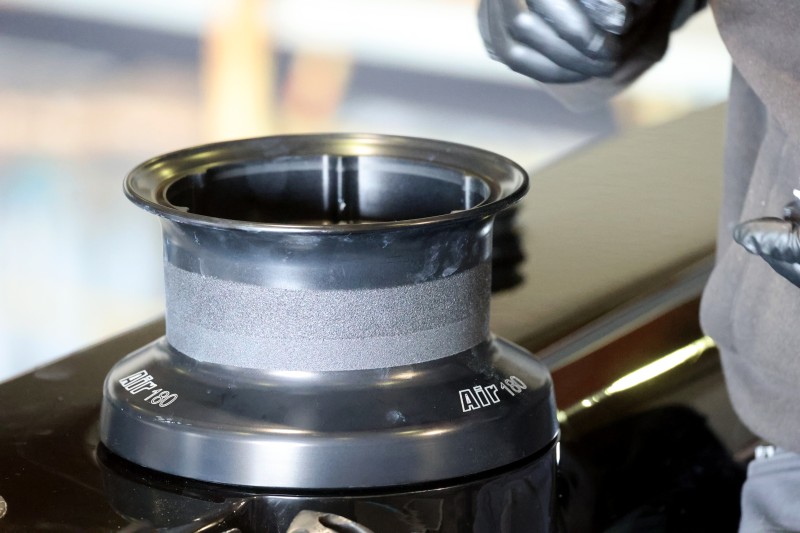
‘For us in the 44Cup circuit that’s not relevant’, says Hosking. ‘We are a one design class so our class has chosen a specific gear that is used on all the boats. But for other boats that is definitely an interesting feature. ‘For us it’s all about speed and power. With its wide, low drum the AirWinch can handle much higher line speeds and fewer line turns – resulting in faster operation and more efficient trim and manoeuvres.’
The new grand prix winch can be delivered plain topped or with a selftailing top. It can be driven manually by handle, grinding pedestals or electric/hydraulic motors. The Harken AirWinch 180 is now available for orders.
